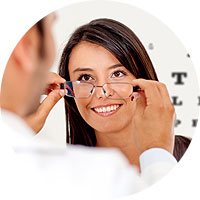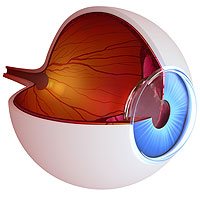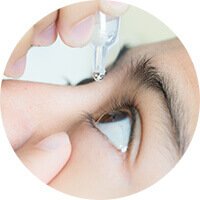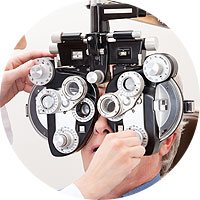When it comes to pediatric healthcare, parents almost always have a pediatrician and dentist in mind (sometimes even in their speed dial). However, growing children need thorough, comprehensive care for every aspect of their health – including their eyes. Eye care is usually overlooked in pediatric medicine because parents can be unaware of the importance of their children’s eyes, thinking eye care is a concern exclusive to adults. With this lack of health education, many parents consult eye specialists when their children are already experiencing problems and symptoms such as poor, blurry vision or recurring dry, itchy eyes.
Contrary to popular belief, eye disorders among children are very common. The American Optometry Association (AOA) estimates that 1 in every 4 children has a vision-related condition. If left undiagnosed and untreated, this serious condition could hinder a child’s normal growth and development. Pediatric eye exams are just another important step in making sure that children are happy and healthy.
All in the Family
Though some eye conditions develop with time, many disorders are inherent and can stem from one’s genetics.
Common vision-related problems that can be found in children include nearsightedness, farsightedness and astigmatism. Nearsightedness, occurring between ages eight to fifteen, is the inability to see distant objects clearly. With farsightedness, vision is blurry when looking at objects up-close. (However, mild farsightedness can be normal in young children.) Astigmatism, irregularly shaped eyes resulting in blurred vision, requires glasses only when it is strong.
Amblyopia, which is normally referred to as “lazy eye”, is also common. It is characterized by poor, underdeveloped vision in one eye. If left untreated, the amblyopia can turn refractive, which means the child’s brain will recognize the the better-seeing eye as stronger and essentially stop using the poorer eye.
Many of these vision disorders cannot be changed once a child is fully-grown. After 9 years of life, the visual system is normally fully-developed, leaving the conditions apt to worsen. Prompt and early diagnosis is crucial to ensuring your child’s vision to be healthy for a lifetime.
Annual Pediatric Eye Exams
Fortunately, most eye conditions developed at the pediatric stage can be correct if discovered early on. The best way to guarantee prevention is through annual pediatric eye exams at our facility in Wilkes-Barre, PA.
Preschool is a critical time for learning, and sensory adaptation cannot develop without the help of two healthy eyes. We recommend scheduling your child’s first eye exam with us as early as the age of three. The AOA recommends that children have eye exams every two years. Pediatric Eye Exam in Pennsylvania provides the best optometric eye examination to make sure your preschooler’s vision is developing properly and there is no presence of eye disorders.
More Than Just an Accessory
Glasses are prescribed to correct for significant changes in vision such as myopia (nearsightedness), hyperopia (farsightedness) and astigmatism. This usually occurs if the prescription for the other eye is stronger than the other. Wearing glasses can also prevent amblyopia from developing.
Eighty percent of all learning is performed through vision. Other symptoms of learning-related vision problems include eyestrain resulting to headache, short attention span, difficulty of identifying objects, poor eye-hand coordination and developmental delay. Do not wait for these symptoms to impede your child’s learning capability.
Pediatric Eye Exams in Wilkes-Barre and Scranton can provide correct diagnosis, and proper treatment to align with your child’s needs. Our Pediatric Eye Specialists in Pennsylvania will be more than happy to answer any questions you may have about your child’s eye health. Help your child to reach his highest potential by providing a clear vision and future – call us today!

















